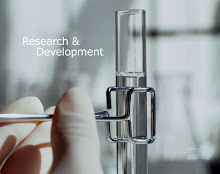ABSTRACT
INFLUENCE
OF CILEMBU BULBS ON CHOLESTEROL LEVELS THE WHITE MICE (Mus musculus) IN VIVO
Anis Susanti(1), Cikra Ikhda
N.H.S (2), Dewy Resty B (3)
Departement of Biology Pharmacy, IIK,
Kediri, Indonesia
Email : cikranursanianto@yahoo.com
Increased
levels of cholesterol in the blood is a major cause of atherosclerosis. This
study aimed to examine the effect Cilembu bulbs that can lower cholesterol
levels in experimental Mus musculus were induced by High Fat Diet Eat (MDLT)
consisting of oil and beef fat with a ratio of 5:1 which aims to optimize cholesterol levels
blood of mice. 30 research subjects mice. This experiment was divided into 6
groups: negative control (PGA 2% BB), positive control (MDLT 2% BB), comparison
(2% + simvastatin MDLT 0.026 mg / 20 g BW), and 3 different doses (0.5 , 2, 5
mg / 20 g BW). Total blood cholesterol levels of tail measured by Glico test.
Data were analyzed by repeated ANOVA, followed by Duncan test. The tubers
Cilembu significant effect on lowering blood cholesterol levels (p <0,05).
Results
of this study showed that infusion at a dose of 0.5 Cilembu bulbs, 2, 5 mg/20 g
BW mice can lower total cholesterol. Decrease in total cholesterol levels by
21,27% concentration can lower total cholesterol levels were the highest obtained
in mice given Cilembu tuber infusion at a dose of 5 mg/20 g BW.
Keywords: bulbs Cilembu, total cholesterol, Mus
musculus


